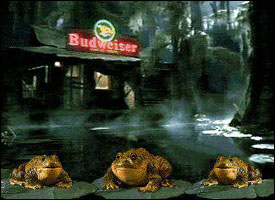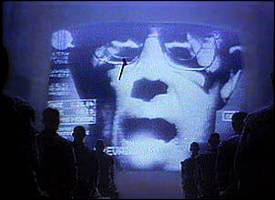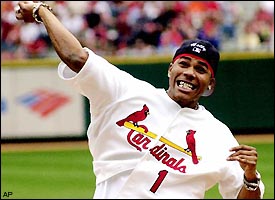| ESPN.com: Page3 |
 | |
| Budweiser hopes to score another big commercial hit like it did with its infamous frogs. |
| If you have to ask how much ... |
|---|
|
In the past seven years, Super Bowl advertising has gone up $1 million for a 30-second spot:
1998 -- $1.3 million 1999 -- $1.6 million 2000 -- $2 million 2001 -- $2.3 million 2002 -- $2 million 2003 -- $2.1 million 2004 -- $2.3 million |
 | |
| Apple reportedly paid $500,000 for its famous minute slot for the MacIntosh in 1984. |
 | |
| AOL is hoping Nelly will make a successful pitchman during the halftime show. |